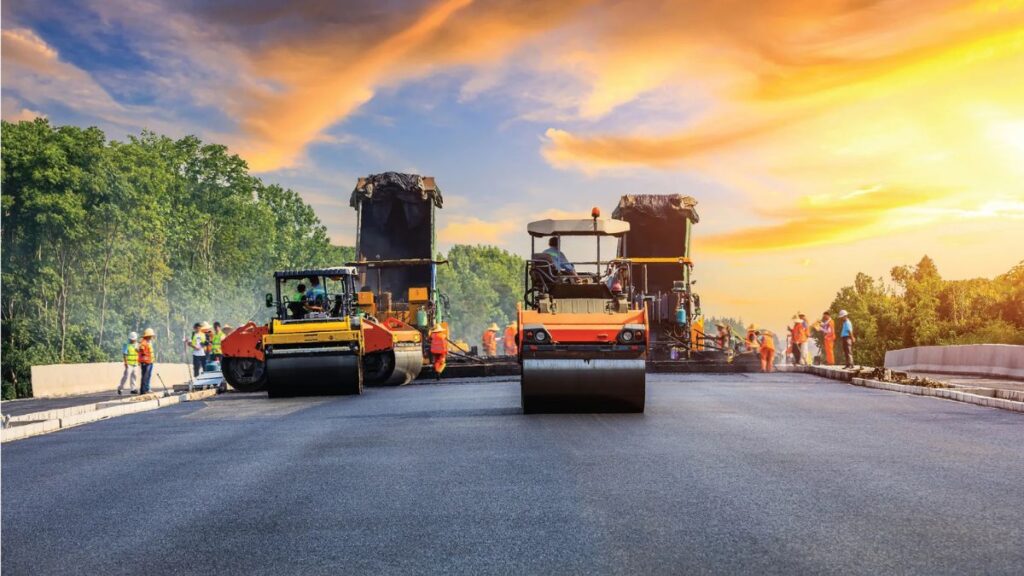When it comes to creating smooth, resilient, and long-lasting surfaces, asphalt stands as one of the most trusted materials in the construction industry. From driveways and highways to parking lots and pathways, asphalt paving has become synonymous with strength, flexibility, and cost-effectiveness. Its ability to endure harsh weather, heavy traffic, and time itself has made it the material of choice for infrastructure projects around the world.
Yet, the true value of asphalt goes beyond its appearance or function it’s a material that embodies modern engineering, environmental responsibility, and innovation. As technology evolves, asphalt continues to transform, offering smarter, greener, and more efficient solutions for the future.
Understanding the Fundamentals of Asphalt
Asphalt is a composite material made up of aggregates (crushed rock, sand, and gravel) bound together by bitumen, a petroleum-based substance that gives the mix its flexibility and binding strength. The combination of these materials creates a pavement that is durable yet adaptable to different climates and conditions.
Unlike rigid pavements, asphalt can expand and contract without cracking, making it ideal for regions with significant temperature fluctuations. It’s also quick to install, easy to maintain, and highly cost-efficient qualities that have cemented its dominance in both residential and commercial paving applications.
There are multiple types of asphalt mixes used for various purposes, including:
- Hot Mix Asphalt (HMA): The most common type, used for highways and heavy-traffic roads.
- Warm Mix Asphalt (WMA): Produced at lower temperatures, reducing energy consumption and emissions.
- Cold Mix Asphalt: Used for temporary repairs and maintenance in colder conditions.
Each type is engineered to meet specific performance needs while offering flexibility in design and application.
The Process of Asphalt Paving
Professional paving is both an art and a science. Every successful project follows a systematic process to ensure strength, stability, and longevity.
1. Planning and Design
Before construction begins, contractors analyze the site’s soil composition, drainage, and intended usage. Proper grading and slope design ensure that water drains away from the surface, preventing erosion and damage.
2. Excavation and Base Preparation
A solid base is crucial to long-term durability. The old surface (if any) is removed, and the subgrade is compacted. Layers of crushed stone or gravel are added and leveled to create a firm foundation that supports the asphalt layer above.
3. Application of the Binder Layer
The binder layer, composed of larger aggregates mixed with bitumen, provides structural support and load-bearing capacity. It acts as the foundation’s reinforcement.
4. Laying the Surface Course
The top layer, or surface course, is where durability meets aesthetics. It’s smoother, made with finer aggregates, and compacted to create a sleek, even finish.
5. Compaction and Finishing
Rollers are used to compact the freshly laid asphalt while it’s still hot. This step removes air pockets and ensures that the surface is uniform, dense, and durable. Once cooled, it becomes a solid, resilient pavement ready for use.
Advantages of Asphalt as a Paving Material
Asphalt has earned its place as one of the most reliable paving materials for several compelling reasons.
1. Durability and Flexibility
Unlike concrete, asphalt has an inherent elasticity that allows it to adjust to temperature changes and ground movements without cracking. This flexibility makes it perfect for a variety of climates.
2. Cost-Effectiveness
Installation and maintenance costs for asphalt are typically lower than for other materials. Repairs are also easier, allowing damaged areas to be patched without replacing the entire surface.
3. Quick Installation
Asphalt can be installed and cured rapidly, meaning less downtime for property owners or municipalities. This makes it ideal for projects that need to be completed efficiently.
4. Noise Reduction
Asphalt’s smooth, flexible texture reduces tire noise and vibration, resulting in quieter roads and driveways.
5. Sustainability
Asphalt is one of the most recycled materials in the world. Old pavement can be milled, reheated, and reused in new projects, maintaining the same quality while reducing waste and resource consumption.
The Importance of Maintenance
Even the best paving work requires regular care to maximize its lifespan. Proper maintenance can extend the life of asphalt surfaces by decades, protecting your investment and keeping the surface looking new.
Some key maintenance practices include:
- Sealcoating: Applying a protective coating every few years shields asphalt from UV damage, water, and chemicals.
- Crack Filling: Small cracks should be sealed early to prevent moisture from seeping into the base and causing structural damage.
- Regular Cleaning: Removing oil spills, debris, and vegetation helps maintain surface integrity.
- Pothole Repairs: Quick patching prevents further deterioration and maintains a smooth, safe surface.
A consistent maintenance plan ensures safety, longevity, and lasting curb appeal.
Sustainability and Eco-Friendly Innovations
Sustainability is becoming increasingly central to infrastructure development, and asphalt has kept pace through innovation. Modern asphalt paving incorporates environmentally responsible practices such as recycling, energy-efficient production, and sustainable material sourcing.
1. Recycled Asphalt Pavement (RAP)
Old asphalt can be reclaimed, processed, and mixed into new pavement, reducing waste and saving on raw materials.
2. Warm-Mix Technology
Warm-mix asphalt uses lower production temperatures, cutting energy use and greenhouse gas emissions by up to 20%.
3. Porous Asphalt Systems
These systems allow water to pass through the surface, replenishing groundwater and reducing runoff. It’s an excellent solution for eco-friendly driveways and parking areas.
4. Solar and Reflective Technologies
Innovations such as reflective coatings and solar asphalt help reduce heat buildup and can even generate energy in future applications.
These sustainable practices demonstrate that asphalt is not only strong and cost-effective but also environmentally responsible.
The Future of Asphalt Technology
As the world transitions toward greener and smarter infrastructure, asphalt continues to evolve. Researchers and engineers are developing cutting-edge solutions that make pavements safer, stronger, and more intelligent.
Self-Healing Asphalt
Imagine a road that repairs itself. Self-healing asphalt uses materials that react to heat or sunlight to close small cracks automatically. This technology can extend pavement life and reduce maintenance costs significantly.
Automation and Smart Construction
Modern paving equipment now includes laser-guided systems and AI-powered sensors for perfect compaction, thickness, and alignment. These tools reduce human error and improve efficiency.
Carbon-Neutral Asphalt
New production techniques aim to minimize or completely offset carbon emissions during asphalt manufacturing, helping meet sustainability goals in the construction sector. Researchers and industry experts are exploring carbon-neutral asphalt technologies that reduce greenhouse gas emissions while maintaining performance standards. The integration of these innovations signals a future where asphalt is not only functional but also intelligent, sustainable, and adaptable to changing global needs.
The Value of Professional Expertise
A flawless asphalt surface isn’t achieved by chance; it requires the knowledge, precision, and skill of a professional paving crew. Experienced contractors understand soil behavior, weather patterns, and the proper ratios of aggregate and binder needed for specific environments.
Working with experts ensures that the pavement meets all engineering standards, resists wear, and maintains visual appeal for years. From preparation to finishing, professional installation delivers long-term value, safety, and peace of mind.
Conclusion
Asphalt remains one of the most versatile and reliable materials in modern infrastructure. It combines affordability, resilience, and environmental adaptability, making it an unmatched choice for roads, driveways, and large-scale projects alike.
Through innovation and sustainable practices, asphalt paving continues to evolve offering smoother, longer-lasting, and more eco-friendly surfaces than ever before. Whether for residential use or commercial construction, asphalt represents the perfect balance of performance, practicality, and progress.
In the hands of skilled professionals, this remarkable material not only paves the way for daily convenience but also lays the foundation for a smarter, more sustainable future.







